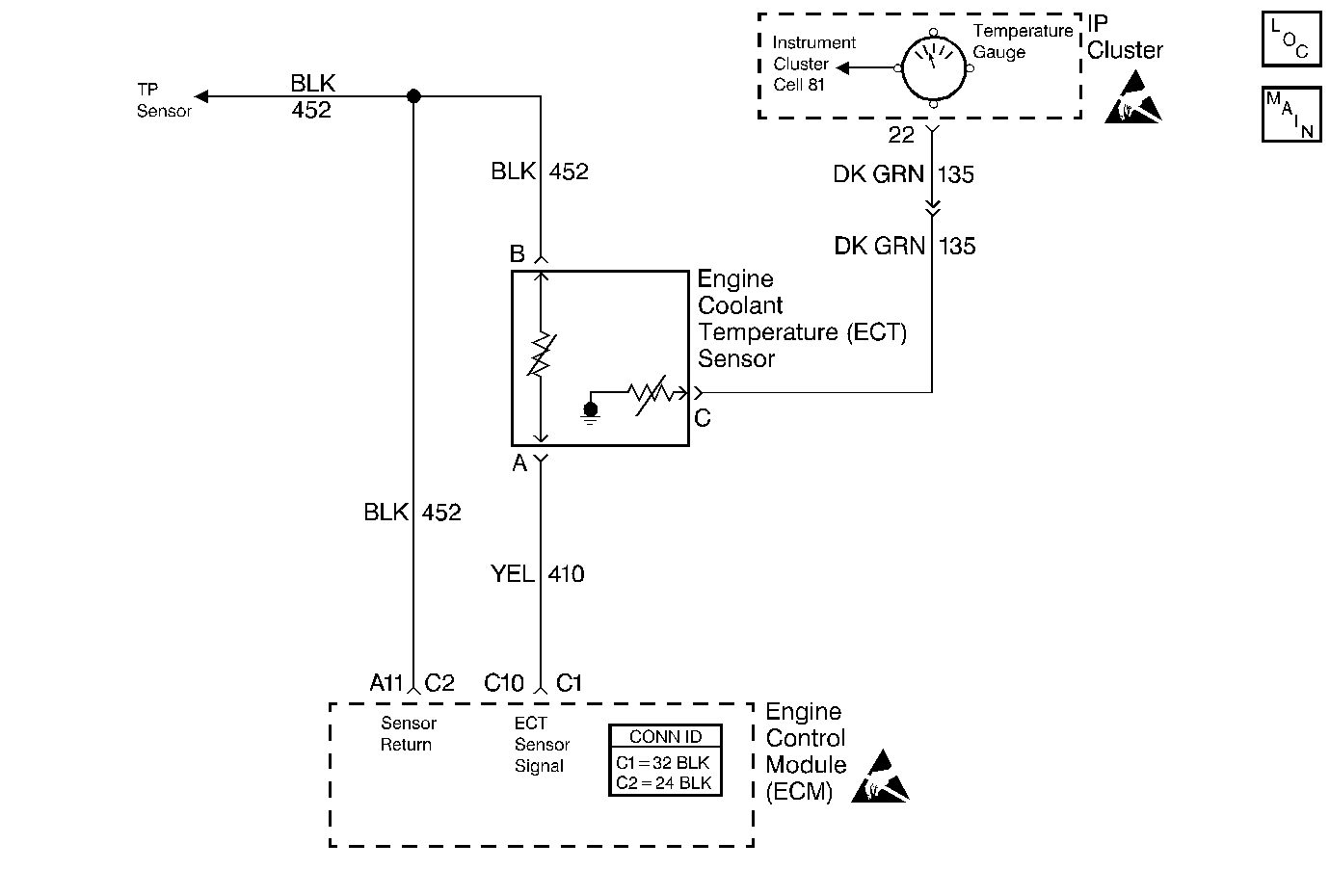
Circuit Description
The Engine Coolant Temperature (ECT) sensor is a thermistor which controls the signal voltage to the ECM. The ECM applies a voltage on the ECT signal circuit to the sensor. When the engine is cold, the sensor (thermistor) resistance is high; therefore, the ECM will see high signal voltage.
As the engine warms, the sensor resistance becomes less and the voltage drops. At the normal engine operating temperature 85°C to 95°C, (185°F to 200°F) the voltage will measure about 1.5 to 2.0 volts.
Conditions for Setting the DTC
Signal voltage indicates a coolant temperature above 130°C (266°F) for 3 seconds.
Action Taken When the DTC Sets
The Malfunction Indicator Lamp (MIL) will illuminate. The system will go Open Loop.
Conditions for Clearing the MIL/DTC
The conditions for the fault are no longer present and 50 ignition cycles have passed with no further faults or the ignition switch is turned OFF and the battery feed voltage is removed for 10 seconds.
Diagnostic Aids
Check the harness routing for a potential short to ground in ECT signal circuit.
The scan tool displays the engine coolant temperature in degrees centigrade. After the engine is started, the temperature should rise steadily to about 90°C (195°F) then stabilize when thermostat opens.
Refer to Intermittent Conditions .
Use the Temperature vs Resistance scale at the right may be used in order to test the ECT sensor at various temperature levels in order to evaluate the possibility of a skewed (mis-scaled) sensor. A skewed sensor could result in poor driveability complaints.
Test Description
The numbers below refer to the step numbers on the Diagnostic Table.
-
This step checks to see if a DTC was set as result of a hard failure or an intermittent condition.
-
This test determines if the ECT signal circuit is shorted to ground which will cause the conditions for DTC 14.
Step | Action | Value(s) | Yes | No |
|---|---|---|---|---|
1 | Did you perform the On-Board Diagnostic (OBD) System Check? | -- | ||
Install a scan tool. Does the scan tool display the engine coolant temperature at or above the specified value? | 130°C (266°F) | Go to Diagnostic Aids | ||
Disconnect the engine coolant temperature (ECT) sensor. Does the scan tool display the engine coolant temperature below the specified value? | -30°C (-22°F) | |||
4 | Replace the engine coolant temperature (ECT) sensor. Refer to Engine Coolant Temperature Sensor Replacement . Is the action complete? | -- | -- | |
5 |
Did you find a problem? | -- | ||
6 | Replace the ECM. Refer to Engine Control Module Replacement . Is the action complete? | -- | -- | |
7 |
Did the DTC reset? | -- | ||
8 | Does the scan tool display any additional, undiagnosed DTCs? | -- | Go to the Applicable DTC Table | System OK |
